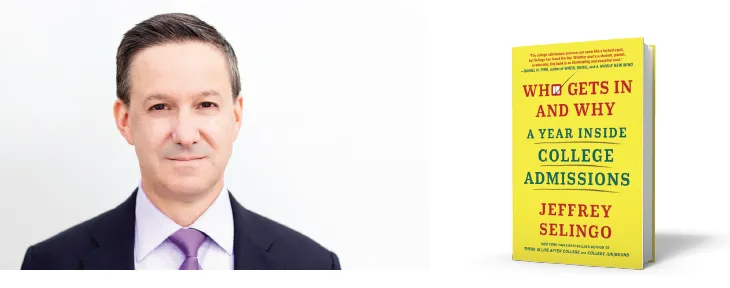Jeff Selingo ’95 interned at U.S. News & World Report while working toward an IC journalism degree. Years later, in 2007, Selingo’s former mentor from his time at U.S. News died, leaving him a box of the magazine’s college rankings that showed astonishingly higher acceptance rates at “elite” schools during previous decades.
“Now top colleges are even harder to get into, and they’re inundated with applications,” Selingo said. “I wanted to look at the phenomenon of college admissions, which has changed in the last generation. It’s a $10 billion industry—in giving a window into it, I needed the perspective of many different players.”
Who Gets In and Why: A Year Inside College Admissions, named one of 100 notable books of 2020 by The New York Times, is his third book on U.S. higher education. In it Selingo, a former Chronicle of Higher Education editor, explores the black box of the admissions process—how students are selected, waitlisted, or denied.
For nearly two years, Selingo was embedded in admissions offices at three institutions: Emory, a private university in Atlanta; Dickinson, a liberal arts college in Pennsylvania; and the public flagship University of Washington, in Seattle. What he discovered was a complicated, imprecise, fluctuating system. His statistically rich analysis includes the perspective of student applicants. It also considers the effects of the high school counseling process, early decision, legacies and athletes, and test-optional applications.
Selingo defines institutions as either “buyers” or “sellers.” “Sellers” offer a brand name and exclusivity; they don’t have to discount tuition to fill a class and can provide primarily need-based financial aid. But only about 50 institutions enjoy such lofty reputations: the majority are “buyers,” wooing students to enroll via tuition discounts and merit (rather than need-based) awards.
Students seeking to advance in life as far and as fast as possible focus on the select institutions, where chances of admission are notoriously slim. He describes just how competitive these institutions are and how mysterious is the weighting of their varied criteria—test scores, extracurriculars, geographic region, and AP courses, among many others. At the end of the day, colleges gamble on students they believe are right for them at a particular moment, inevitably denying admission to superbly qualified students.
But Selingo indicates that excellent educations can be had at many “buyer” institutions, which applicants often overlook. He cites his own education at Ithaca College (where he is a trustee) as an example. He wants parents to understand that, at these places, students are most likely to get financial aid based on merit as well as need. By looking past the “prestige,” students can increase their chances of admission and support, and find “the right fit.”
High school grades and course rigor are finally more important than SAT scores, Selingo says, and ultimately, “Success in college is about how you go, not just where you go.”
